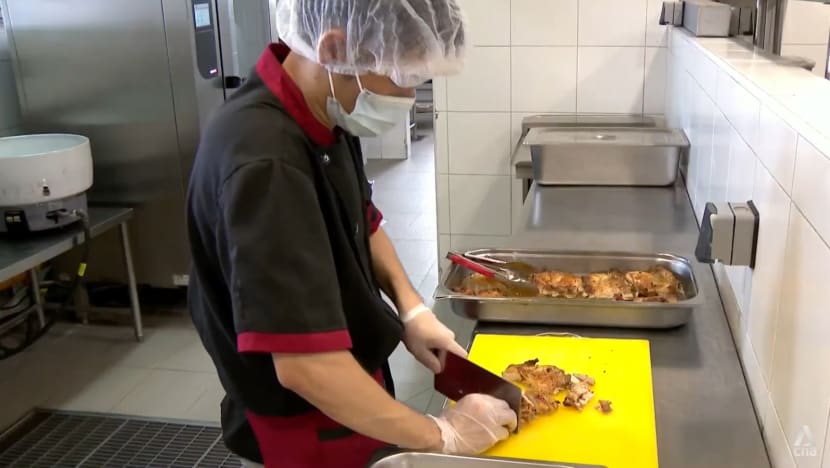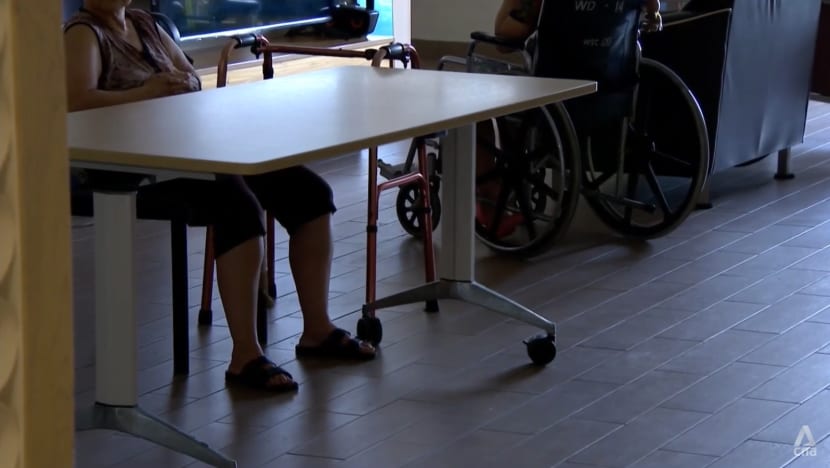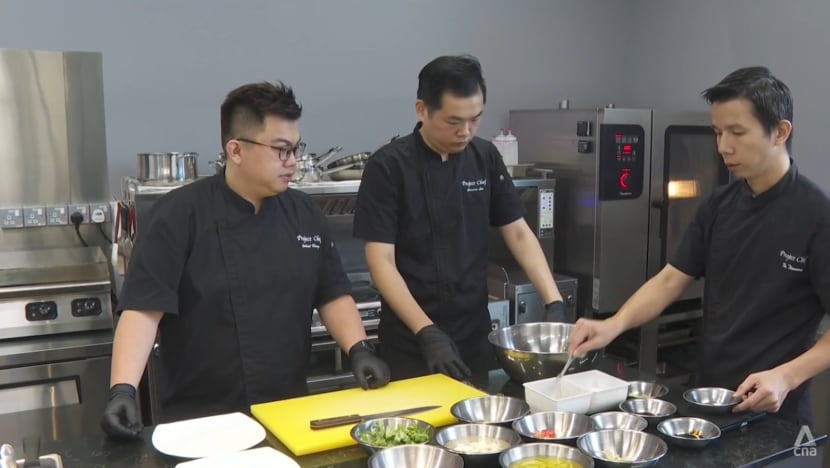Roast chicken, miso soup: Nursing homes enhance meal offerings with tastier, healthier menus under AIC initiative
Over 20 nursing homes have teamed up with professional chefs to improve their meal offerings, under an initiative by the Agency for Integrated Care (AIC).

Kitchen staff preparing roast chicken in Ren Ci Nursing Home in Ang Mo Kio.

This audio is generated by an AI tool.
SINGAPORE: Think of meals in nursing homes and you will likely envision soft, minced food that are easier for residents to consume.
However, food at some nursing homes across the island are getting a revamp, with dishes like roast chicken, egg drop soup and miso soup on the menu.
Over 20 homes have teamed up with chefs to improve their meal offerings, under a programme led by the Agency for Integrated Care (AIC).
They are harnessing technology to create meals that are not only tastier, but also more nutritious.
The programme is mostly funded by AIC, with each home contributing no more than S$2,000 (US$1,500).
TASTIER AND HEALTHIER
At Ren Ci Nursing Home in Ang Mo Kio, efforts were made to enhance its menus and refresh its kitchen equipment over several months.
Switching things up helps satisfy the palettes of its 470 residents and improves their health outcomes, said the home.
For instance, roast and grilled food – dishes that do not typically feature at such homes – are now available on the menu.
Executive director Darren Au Yeong told CNA the home uses technology such as a combi-oven to cook the food. It helps the home prepare food in bigger portions, and in a healthier way.
Among its offerings is black pepper roast chicken. Previously, the chicken was prepared in smaller pieces and tasted blander, he said.

"Studies have found that seniors in nursing homes tend to lose muscle mass due to insufficient caloric or protein intake,” said Mr Au Yeong.
“The reason for that is because the residents get (too) familiar with the food menus. And when they're familiar with the food, they tend to lose appetite (and) they don't want to eat it, so they just consume less food.”
Under the new AIC programme, the home is trying to vary its food choices and introduce more flavours and textures, he added.
It is doing so under the guidance of culinary consultancy Project Chef, comprising established chefs who help the nursing homes on the sidelines.
HIGHER STANDARDS
Mr Xu Tianmu, director and consulting chef of Project Chef, said that recipe improvement is an area of focus.
In the past five to 10 years, a lot of nursing homes do not have standard operating procedures nor standardised recipes and menus, he noted.
“All (our) menus and recipes are from hotels and restaurants, so we set a high standard in nursing homes,” Mr Xu said of Project Chef’s efforts.
“(We are) not just giving them a template. Our chefs also go in there to train them and guide them through a full three-month training session.”

Ms Heidi Rafman, chief of AIC’s quality division, told CNA that on average, nursing home residents have reported a 45 per cent increase in satisfaction with the new menus.
“On top of that, the efficiency of the kitchen staff has improved by an average of 22 per cent, through improvement in their workflow and the adoption of more modern cooking technology and equipment,” she said.
At Lentor Health Nursing Home’s newly opened West Coast branch, for instance, kitchen staff have been trained to use combi-ovens and tilting pans.
Chef-in-charge David Low told CNA that the modern equipment is more user-friendly than the traditional wok, especially when preparing food in bulk.
AIC is currently contacting more nursing homes to join the programme and identify ways to improve their processes.


















